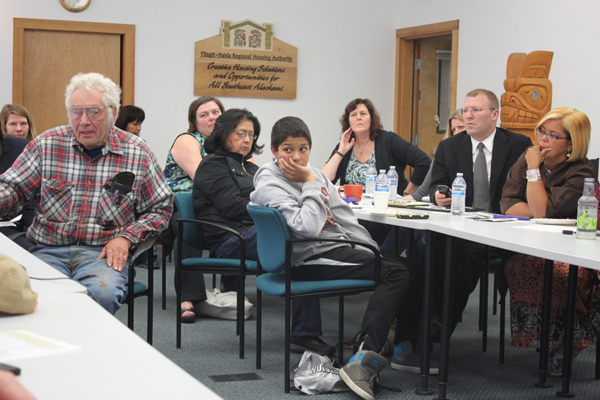
Residents of the capital city now qualify for “rural” federal housing loans from the Department of Agriculture after Congress raised the population cap for communities to qualify.
The loans make home ownership more accessible in a city that lists affordable housing as one of its top issues.
Mae and Kaelen Delcastillo are married with two children. Mae says they’ve been renting in Juneau for three years and pay about $1,500 a month for a two-bedroom apartment.
“It is a bit expensive,” she says. “So we are looking, of course, trying to purchase a home or build our own house.”
Mae and Kaelen are both in their 30s. She works at the registrar’s office at the university. He’s a janitor at the Federal Building. They’re hoping to buy a three-bedroom home for about $300,000
Kaelen says the thought of putting a 10 percent down payment on a house is terrifying.
“To put that much down and to not have any buying power is kind of scary,” he says.
But Kaelen is feeling better about buying a home after learning about USDA’s Rural Development housing programs, which he now qualifies for as a Juneau resident.
“I know Juneau is the capital city and villages look at Juneau as the big city. But if you look across the country at capital cities, most of them are in rural areas and they’re rural communities,” says Keith Perkins, director of USDA Rural Development in Southeast Alaska, based in Sitka.
“So Juneau kind of fits that mold,” Perkins says. “And Juneau really is a rural community by national standards.”
Depending on certain criteria, Rural Development housing programs can offer terms like 100 percent financing, long-term repayment plans, subsidized interest rates and no down payment.
Juneau Economic Development Council Executive Director Brian Holst says many capital city residents have difficulty finding affordable housing. He says there isn’t enough housing in Juneau to meet demand.
“Many of our builders build homes that are hard for lower-income people to purchase, because there aren’t a lot of programs out there that allow for those lower-cost homes to be accessed by our working class,” Holst says.
Builder Russ McDougal of MAC’s Design & Construction says USDA’s housing programs could help alleviate that problem. The maximum loan amount for a Juneau resident under the programs is $322,600.
“That’s a tough market to build in and it’s not impossible, but it means that you’re going to have to have a builder that’s interested in targeting that market,” McDougal says. “And I think that we’ll see that because of this program, there will be builders that will take advantage of that and move that way.”
McDougal remembers a time when many houses were being built in Juneau.
“When I graduated high school in 1976, I went to work for a contractor here that was building around Melvin Park. I believe they built about 80 the year that I worked for them,” McDougal says.
Land in the center of the Mendenhall Valley was flat and easy to develop.
“Those new homes were selling in the neighborhood of $50,000 for a two-bedroom house with a garage on its own lot,” McDougal says.
A 2012 Juneau Housing Needs Assessment indicates the average price of a single-family unattached home is close to $380,000.
USDA Rural Development loan technician Marsha Lysons says she’s already received calls from Juneau residents about the loans and anticipates a lot more interest.
“Just talking to other lenders and other Realtors and people here in Juneau that, yeah, we’re expecting a large number of phone calls next week,” Lysons says.
Mae and Kaelen Delcastillo say they’ll surely be among those interested callers.
Lisa Phu is a reporter at KTOO in Juneau.




